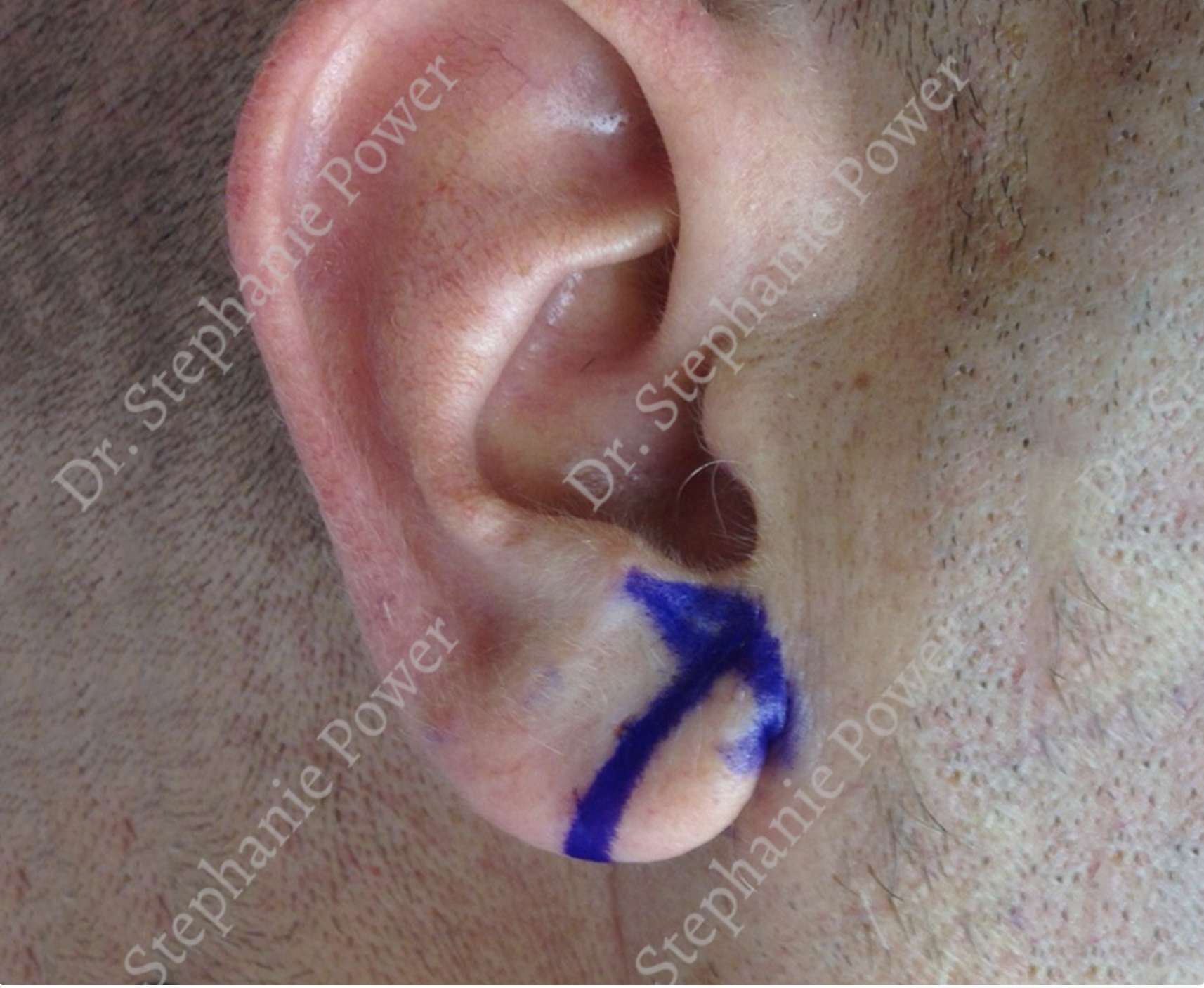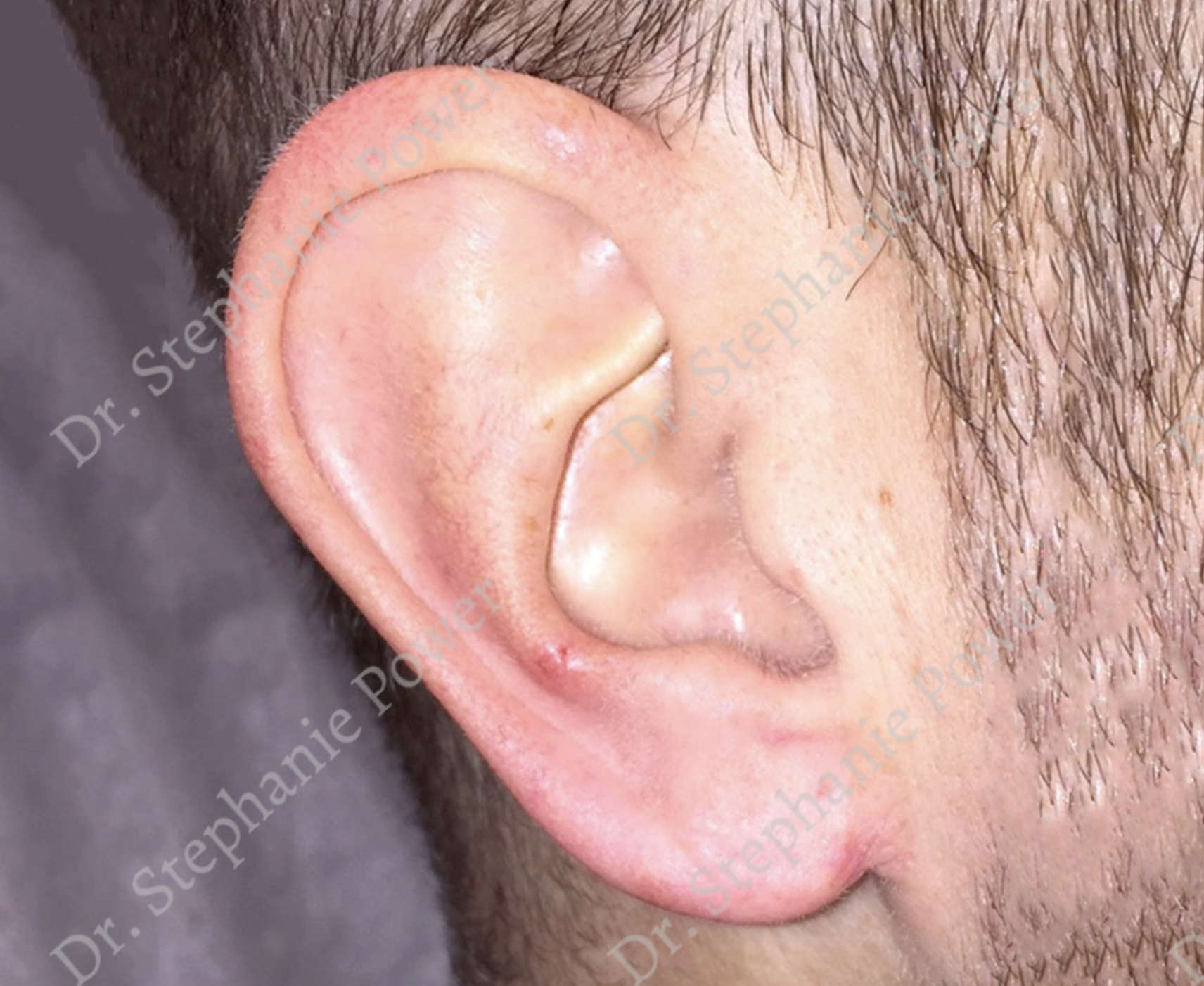Ear Surgery – Otoplasty
In Toronto, canada
OTOPLASTY AT POWER PLASTIC SURGERY
Otoplasty (ear surgery) may be performed to set back ears that appear prominent. During surgery, the underlying cartilage is reshaped and sutured in a position closer to the head in proportion with other facial features. Small incisions are made behind the ears to expose the ear cartilage. The resultant scars are well-concealed and often hidden by the patient’s hair.
Otoplasty is performed as out-patient surgery, most commonly under local anesthetic. Patients are required to wear a bandage dressing following ear surgery for one week. This applies gentle support for the ears during early healing. Patients may generally return to work within one week of surgery, however should refrain from strenuous activity or heavy lifting for one month post-operatively.
Types of Earlobe Procedures
The following earlobe procedures may also be performed in a minor procedure room setting:
Torn Earlobe Repair
Earlobe piercing tracts may become elongated due to heavy earring wear or following an episode of trauma. Both stretched and torn earlobe piercings may be corrected under local anesthetic. The piercing tract or cleft (if completely torn) is excised and then closed using small stitches on the front and back of the earlobe. These sutures are removed one week later. It is recommended to delay re-piercing the earlobe for approximately 4-6 months to lower the risk of recurrent stretching or pull-through
Earlobe Augmentation
Earlobes may lose volume through facial aging. Augmentation with hyaluronic acid fillers may be performed to restore a more youthful appearance of the earlobes. Filler injections within this region may restore earlobe volume as well as soften wrinkles which may become more prominent over time.
It is also possible to reduce earlobes that have been expanded. It is generally recommended to first downsize the spacers over a few months to allow the piercing tract to contract. Reconstruction may then be performed to reduce the redundant earlobe tissue and to improve contour.
Earlobe Reduction
Earlobes may also be reduced for cosmetics. The resultant scar is placed along the earlobe-cheek junction to minimize its appearance over time. The stitches are removed one week later.
Earlobe Reduction Following Earlobe Spacers/Expansion
Bandages are not required beyond the first 24 hours following earlobe surgery. Wound care instructions will be provided.
Ear Surgery FAQs
Can I drive after ear surgery?
You can drive after ear surgery once you are no longer taking prescription pain medication and feel well enough to proceed safely.
Does otoplasty affect hearing?
Otoplasty is performed on the external ear and does not affect hearing.
Does otoplasty last forever?
There is risk of recurrence after otoplasty if there is failure of the sutures holding the cartilage in place. Once healed, results from otoplasty are long-lasting.
How dangerous is ear surgery?
Although every type of surgery carries risks, ear surgery is generally not considered dangerous when performed on healthy non-smoking patients without serious underlying medical conditions.
How do you sleep after ear surgery?
It is recommended to sleep on your back over the first month or so after ear surgery with your head propped up on 2-3 pillows.
How ear surgery is done?
Ear surgery may be performed under local or general anesthetic. Incisions are made in the fold behind the ear. Excess cartilage is then resected to reduce prominence. Sutures are also placed in the cartilage to alter ear projection.
How long after otoplasty can I exercise?
You may resume exercise at one month after otoplasty.
How long does dizziness last after ear surgery?
Patients typically do not experience dizziness after otoplasty. Dizziness may result following other types of ear surgery, which varies based on the specific procedure.
How long does it take to recover from an ear surgery?
Patients are usually able to return to school or office-based work within one week after ear surgery. It is recommended to refrain from exercise for approximately 4 weeks.
How long is otoplasty surgery?
Otoplasty generally takes 1-2 hours depending on the extent of surgery.
How long should I wear headband after otoplasty?
You should wear a handband for 6 weeks after otoplasty. A full-time dressing should be worn over the first week followed by the headband outside of work or school hours until 6 weeks post-operatively.
How much does ear surgery cost?
Otoplasty is generally $5-8000, which varies based on the type of anesthetic (local vs. general) and extent of surgery. A detailed surgical quote will be provided after consultation.
Is otoplasty a safe procedure?
Although there are risks of every surgery, otoplasty is generally considered a safe procedure when performed on healthy non-smoking patients.
Is otoplasty permanent?
Results from otoplasty should be permanent unless there is disruption of any cartilaginous sutures during healing.
What is ear surgery called?
Ear surgery is also called otoplasty.
What kind of doctor does ear surgery?
Several kinds of doctors perform ear surgery depending on the specific procedure, including plastic surgeons, otolaryngologists, and neurosurgeons.
What should I do after ear surgery?
You should closely follow your post-op instructions after ear surgery. In most cases, it is recommended to wear the surgical dressing over the first week followed by a headband holding your ears in place for 6 weeks.
Why do my ears stick out?
There are various causes of prominent ears that appear to stick out. It is usually caused by an underdeveloped antihelical fold or a deep conchal bowl.
Fly In For Surgery
Live far away? Contact us today to learn about lodging arrangements for out of town patients.
LEARN MORE
Learn From Dr. Power
Want to hear more from Dr. Power? Check out our blog for monthly updates and procedure information.
LEARN MORE
View Our Pricing
We are transparent about pricing. Just let us know which procedure you are interested in and we will give you a range!
LEARN MORE




"I think the best results are natural-looking. Refreshed and reflected by a patient’s self-confidence."
- DR. STEPHANIE POWER